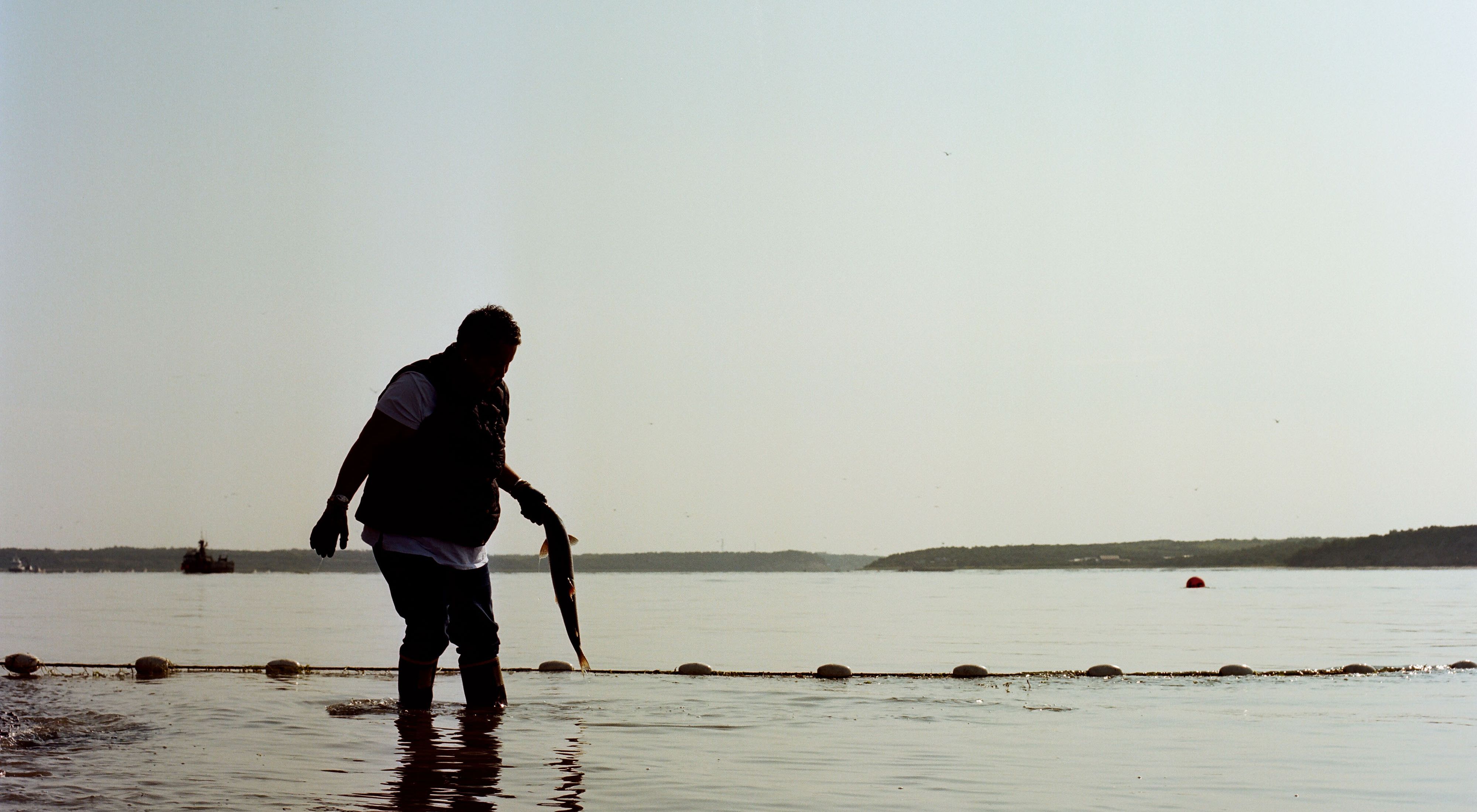Last Run
On the edge of Alaska, a community weighs the future of the greatest sockeye salmon run on Earth.
Hear It From the Author!
Author Dustin Solberg reads the article--click here to listen.
Annette Caruso, togged up in heavy red rain gear and waterproof gloves, launches her 22-foot fishing boat on a gravelly beach where the swift Naknek River spills into an arm of Alaska’s Bristol Bay, a faraway edge of the storm-tossed Bering Sea. As commercial fishing vessels go, it’s a rather spartan open skiff. It has nothing even resembling a padded seat for comfort, nor a roof, leaving Caruso and her two young deckhands exposed to whatever gales or sodden mist July’s skies unleash from above.
The boat rides high across the sea’s chop as the crew sets fishing nets to begin the day. Caruso may end her trip with a 1,000-pound-plus catch on board, her aluminum boat floating low in the water with the hard-earned bounty that Bristol Bay is known for: salmon. There’s more wild sockeye salmon here than anywhere else on Earth.
“It feeds the whole dang world,” Caruso says.
On a map, Bristol Bay resembles the top half of a star, the points of the star jutting inland from the sea. At about 200 miles across, the bay could almost span the Eastern Seaboard between New York City and Washington, D.C.
But unlike the major metropolises of the East Coast, there are practically no roads in this region. People and goods move by airplane or boat among the 31 far-flung Indigenous villages that dot the land.
Quote: Annette Caruso
It feeds the whole dang world.

Help Save Bristol Bay
Take Action NowThe quiet region that supplies half the world's wild sockeye salmon
Six major rivers and thousands of miles of tributary streams flow from tundra, forests and mountains to Bristol Bay. For millennia, these rivers have sustained some of the largest and healthiest salmon runs in the world, and with them the Dena’ina people and Caruso’s own Yup’ik and Aleut ancestors. Indigenous people have fished Alaska’s waters for more than 11,000 years or, as a Yup’ik elder put it, since “time was thin.”
Today, Caruso and her crew are fishing coastal waters near the village of Naknek, population 500. A town with one paved road, Naknek usually is a quiet village. But when the salmon return in June and July, an entire industry pops up and runs full-tilt for six weeks, drawing some 12,000 people. Some work the “slime line,” cutting the catch into fillets for the nation’s seafood counters. Others are fishing boat captains, deckhands, mechanics or net menders.
A supply chain that sources half the world’s prized wild sockeye salmon begins here, in Caruso’s skiff. She unloads her iced catch onto a tender, which brings it to the docks of a Naknek fish processor. Once the whole fish are trimmed into fillets, they’re packaged up and loaded into refrigerated shipping containers.
All those steel containers are soon brought to the Port of Bristol Bay, which, under the midnight sun of an Alaska summer, is like a city that never sleeps: A steady clip of semi-trucks cycles through 24 hours a day, seven days a week, to drop off containers packed with a bounty from the sea: 50,000 pounds of frozen wild salmon fillets. By the end of 2019’s brief commercial fishing season, the port will have shipped out a harvest of 44.5 million fish—the second largest the bay has ever recorded in its 135-year history.
But on the skiff that July day, lingering concerns tug on Caruso’s buoyant optimism. And several threats hang over the bay.
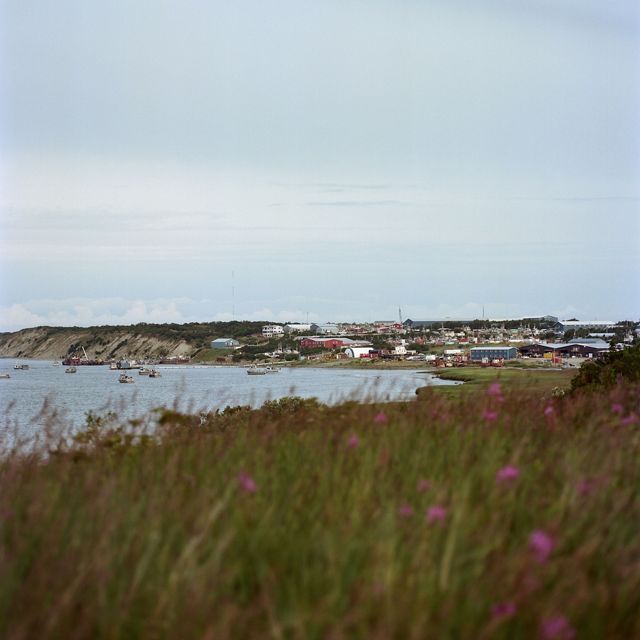

Sockeye salmon are at risk — except in Bristol Bay
Climate change is warming the rivers and ocean. Economic forces have left some struggling to make a living.
And, perhaps most imminent, 30 minutes away by floatplane lies another threat: a proposed mine for copper, gold and molybdenum, a silvery-white metal. Known as Pebble Mine, the project targets what the mining company has billed as “among the globe’s greatest accumulations of metal,” with potential revenues totaling up to $500 billion. Yet these minerals lie at the wellspring of the treasured Kvichak and Nushagak rivers, which together produce half of the bay’s wild sockeye salmon.
“We can’t have that mine here,” Caruso says. “When industry comes, it just comes. They don’t care who they trample over. They’re going to be in it for themselves.”
It leaves Caruso wondering what the future holds for the fishery and a way of life.
“I think of my little cousin Tyler,” Caruso says of her 11-year-old deckhand. “If it’s going to be around for him and his kids.”
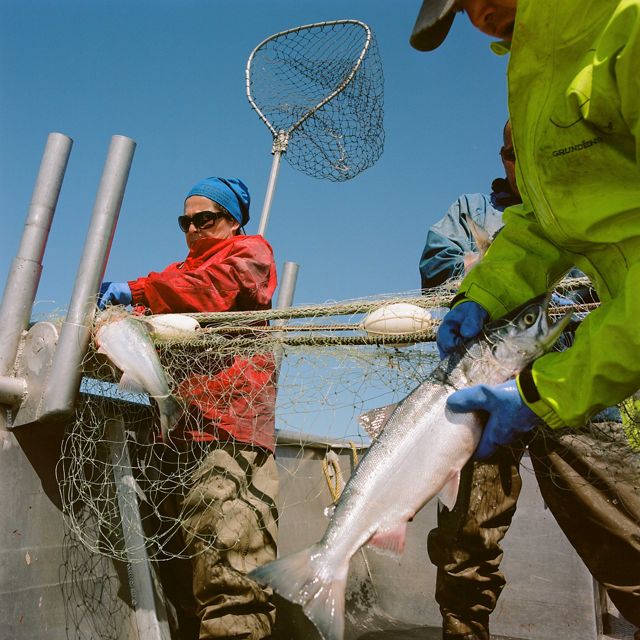
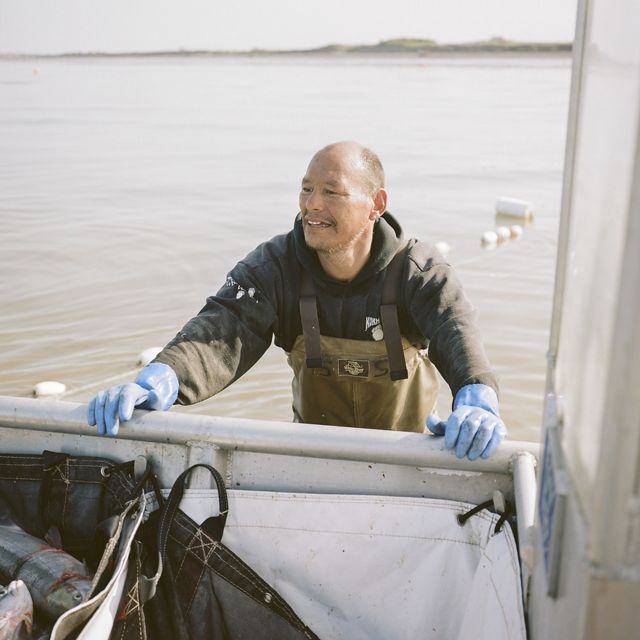
Across much of their range worldwide, wild salmon haven’t fared well, especially in the last century.
Salmon are strong and resilient—to a point. They’re also highly sensitive to a gauntlet of changes. Dams interrupt river flows and block migrations. Hatcheries can taint the genetics of locally adapted wild fish. Big changes on the land, such as the growth of cities and agriculture, pollute waters. Overfishing stunts regeneration. Warmer streams can interrupt the growth of young salmon.
Atlantic salmon have all but disappeared from most of their original ranges in Europe and North America. Pacific salmon populations have also struggled in multiple places in the United States and Canada—sending a cascading ripple through local economies and the ecological food web on land and at sea.
That makes Bristol Bay an anomalous shining star. No place on Earth rivals Bristol Bay’s summertime sockeye “wall of fish,” as it’s known in the fishing fleet. In fact, 2019 saw a run of more than 56 million sockeye salmon in Bristol Bay—the fourth largest on record. Even so, some fish died from unusually warm water in two of the area’s smaller rivers, a wake-up call that may foreshadow future struggles as the climate changes.
On the West Coast of the United States, environmental groups, including The Nature Conservancy and its partners, have restored streamside forests and rivers and promoted new water-management practices to support strong salmon runs. Efforts like these have brought some encouraging results. But restoration is an expensive and inefficient replacement for what scientists say is the salmon’s best defense against climate change: a diverse portfolio of habitat, or everything the Bristol Bay region already has.
That diversity of rivers, ponds, flow rates and temperatures makes the area’s salmon more resilient. “Fish do well in some and not in others during one period of time, but then things reverse and what looked like poor-quality habitat will start producing lots of fish,” says Thomas Quinn, a University of Washington scientist who has researched Bristol Bay salmon for more than 30 years. “Best to keep it all in good shape.”
An Uncertain Future
In Naknek, Alaska, the salmon fishing season is short but lucrative. It supports fishing families, but also an entire supply chain of processors, distributors and smokehouses, like that of Carla Harris. Fish iced in Naknek ship worldwide. But the proposed Pebble Mine upstream of Bristol Bay worries many locals.
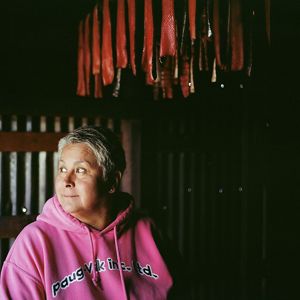
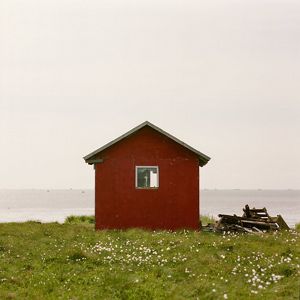
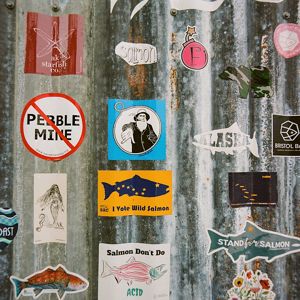
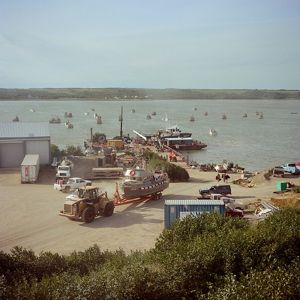
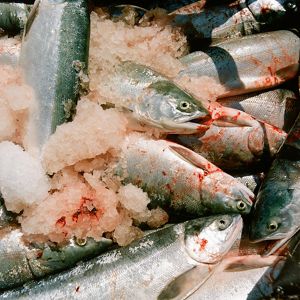

Smokehouse: Carla Harris smokes salmon in a backyard smokehouse © Brian Adams

Fishing Cabin: Many live in fishing cabins along shore in summer © Brian Adams

Sticker Support: Stickers on Carla Harris' smokehouse © Brian Adams

End of Season: Fishermen unload their boats to prepare for winter © Brian Adams

Feed the World: Salmon caught and iced in Bristol Bay ship worldwide © Brian Adams
"The wrong mine in the wrong place"
The Pebble underground ore deposit was first discovered in the late 1980s. For the lone exploration geologist credited with the find, the undulating tundra’s hills, ponds and crystalline creeks called to mind the lush swales of a legendary golf course—California’s Pebble Beach Golf Links. Nearly 20 years later, a Canadian mineral exploration company named Northern Dynasty Minerals Ltd. released plans for a proposed mine there. Since then, Pebble has become a household name in Alaska, synonymous with either golden opportunity or a ruinous future. Anti-Pebble bumper stickers can be found on cars all around Alaska, and some commercial fishing boats fly an anti-Pebble flag.
The prospect of a boom in good-paying jobs—boosters say 2,000 jobs in construction and 850 during operations—has earned the proposed mine pockets of support. But the specter of the mine’s harmful long-term effects on wild salmon has rattled many local tribes and the commercial fishing fleet, seafood processors and ecotourism businesses.
Caruso’s brother, George “Sunny” Wilson, a Naknek boat builder and fishing boat captain, sums up the concern: “I think it’s the wrong mine in the wrong place.”
After conducting its own assessment, the U.S. Environmental Protection Agency proposed a ruling in 2014 that would have restricted the mine’s usage of certain bay-area waters to dispose of mining waste. Under the Trump administration, however, the EPA later withdrew its proposed protections. That opened the door for Northern Dynasty Minerals, in 2017, to pursue the mine and hunt for another major investor.
The current expanded mine plan would directly destroy over 43 miles of salmon streams and more than 15,000 acres of wetlands. Billions of tons of acid-generating waste rock and the risk of industrial accidents would threaten water quality and downstream salmon runs.
Four major international mining companies have already walked away from investments adding up to hundreds of millions of dollars, raising doubts as to the mine’s economic viability. Ultimately, even if the mining company were to receive federal regulatory approvals, the mine’s fate remains uncertain.
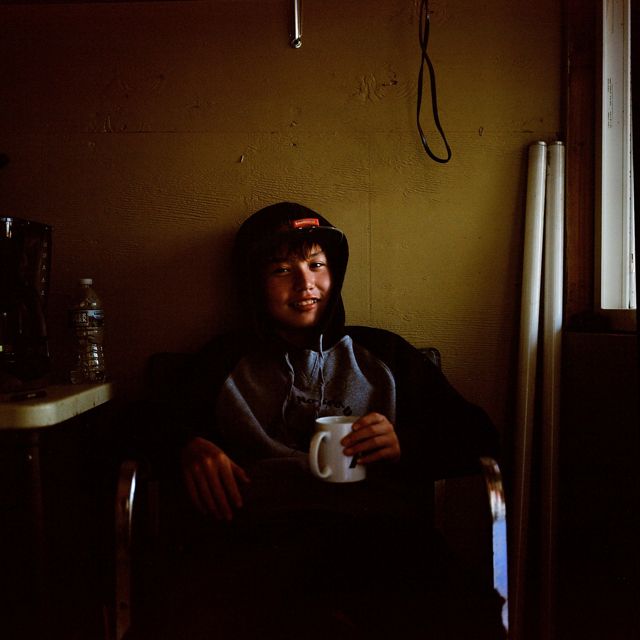
Salmon is a way of life for all of Alaska
The seasonal home for Caruso and her crew lies among a scattering of fishing cabins along the shore near Naknek. One July morning during a lull in fishing, Caruso’s cousin and crew member, Hans Apokedak, drives a dusty green four-wheeler along the gravelly beach. Out across the fishing grounds, boats wait at anchor and bright orange buoys glow against the palette of gray that forms sky and sea. Somewhere out there, a boat engine drones.
Even here at the edge of town, there’s a hint of how wild salmon—what many scientists call a keystone species—feed hundreds of other animal species. Orcas, belugas, seals and Steller sea lions follow the migrating salmon. Bald eagles, watching like sentinels, wait for a moment to strike. Thousands of bears come to prey on salmon in shallow water. The upstream movement of wild salmon shuttles the rich marine nutrient wealth of the Pacific into the Alaskan sub-Arctic—even plants get a healthy nitrogen boost from salmon decaying on riverbanks.
Apokedak slows the four-wheeler to a stop before he points at a set of brown bear tracks pressed deep in the sand, fresh after the previous night’s rain.
“We have some locals here,” he says.
Apokedak recounts how, the summer before, a brown bear—a mama with three cubs, he says—charged him on this beach. It was a brief, terrifying moment that still surfaces in an occasional nightmare.
Back in the shack, with snug bunks at one end and the tools of a mechanic’s shop at the other, Apokedak pours a cup of strong coffee, mixing in five spoons of sugar and a slug of creamer, then sits at a kitchen table where there’s a tide book and a tall bottle of Tylenol Extra Strength.
“It’s hard work but I love it,” Apokedak says. “What I love about fishing is the more you work the more you make. Where else am I going to make $25,000 in four to six weeks?”
In a place where 9-to-5 jobs are few, earnings from the intense fishing season are especially valuable. And the season’s payoff can top $100,000 for fishing boat captains who’ve made the necessary investments in fishing rights, boats and gear.
Market prices for sockeye ebb and flow with economic forces, but for Apokedak the value of salmon as a way of life has never wavered. “We call ourselves people of the fish,” he says.
Once the commercial fishing season winds down in July, Apokedak will net salmon for his own family. His wife will preserve the salmon catch in the traditional way for the coming year: with the crimson red flesh cut open and exposed to the air in the dark interior of the family’s backyard smokehouse. The spicy tang of alder smoke will linger in the neighborhood for days.
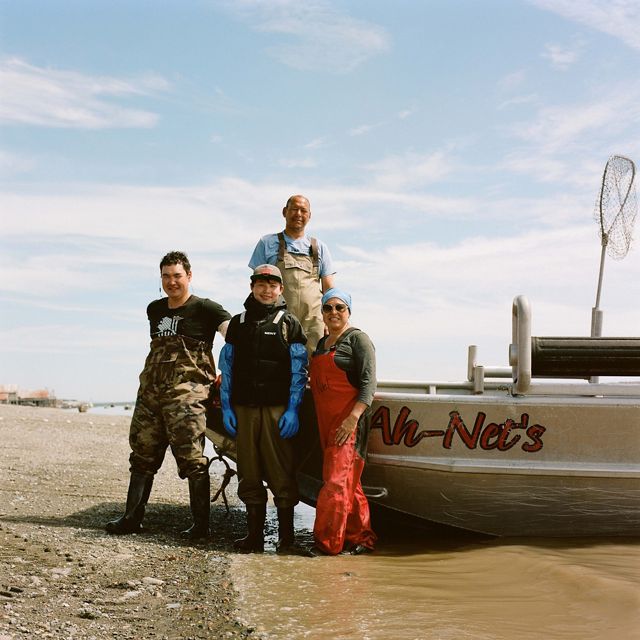
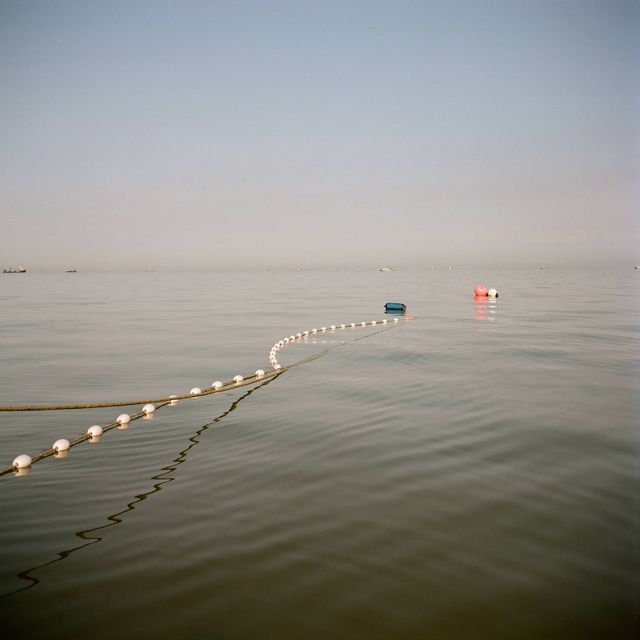
Sockeye salmon versus Pebble Mine
On the water outside the factory-like compound of Naknek’s Silver Bay Seafoods, the region’s largest fish processor, a scrum of 32-foot fishing boats waits, anchored beneath flocks of gulls wheeling in the air above. It’s a scene visible from the big windows in Bristol Bay Manager John Lowrance’s corner office. A flat screen on the wall tracks the real-time location of tenders—vessels hired to ferry the daily salmon harvest from the fishing grounds to the processing plant. That, along with a classroom-sized whiteboard where someone has scribbled out the movements of an industry at work, gives it the feel of a situation room. And the current situation is clear: In Bristol Bay, two of Alaska’s most iconic industries—fishing and mining—aren’t seeing eye to eye.
“The fact that they have a mining claim on some land doesn’t give them a right to destroy salmon runs,” Lowrance says. “We need to all work together to make sure that this environment isn’t developed and therefore degraded for the fish.”
The Nature Conservancy has spent more than two decades in and around Bristol Bay helping to protect fish habitat and working with regional partners, including Alaska Native tribes, to ensure water flowing in salmon streams can’t be siphoned away by industrial projects. The Conservancy has also set development thresholds to stay below to protect salmon.
“Now there’s a very tangible proposal to build a mine that would exceed all those thresholds,” says Steve Cohn, who directs TNC’s work in Alaska. “We’re not just talking about a mine versus wilderness. This is the world’s greatest salmon fishery.”
But increasingly, local people are not the ones profiting from the fishery. The number of locals who captain fishing boats in Bristol Bay has been in a long and gradual decline. That means Indigenous communities are missing out on a major revenue stream they once relied on. Regional groups, including Bristol Bay Economic Development Corporation, and TNC are looking at ways to address that decline while also diversifying the economy.
Last year local leaders, with support from TNC, launched an entrepreneurial startup contest designed to nurture environmentally sustainable economic development. The contest is meant to encourage businesses that serve the community and help the environment as they turn a profit. Modeled after similar business incubators TNC helped to create in the Tongass National Forest of Southeast Alaska, Path to Prosperity in Bristol Bay, as it’s known, brought business planning and training to the contest’s top nine applicants—and prizes of $10,000 to $20,000 and business counseling to the three inaugural winners.
Quote
She dreams of an abundance without end—as she and her ancestors have known.
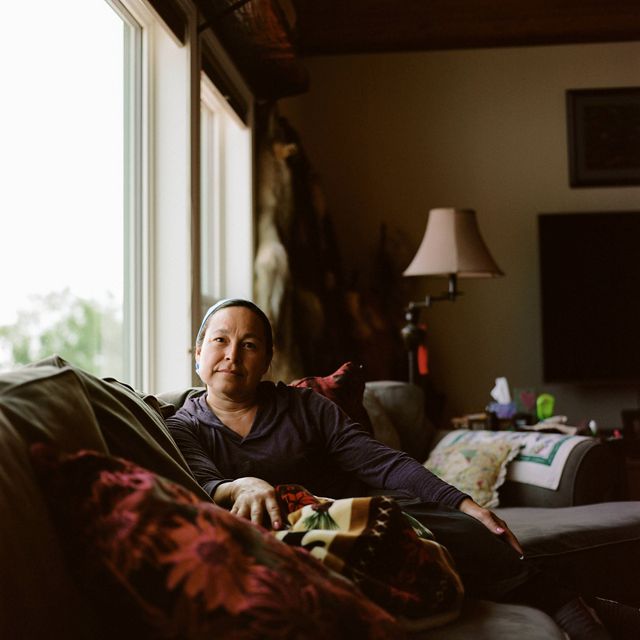
The last salmon industry in the world
On the wall in Caruso’s home is an old black-and-white photo of Grams, her late Yup’ik-speaking grandmother. Faded by time, the framed image captures her looking into the camera, standing firm on the riverbank alongside her harvest of many dozens of salmon—harvests like these sustain a village.
“My Gram used to put up 1,200 fish,” says Caruso.
For Caruso, this preserved glimpse into her Gram’s life and work is a cherished heirloom from Bristol Bay’s past, yet, remarkably, she knows that she, too, lives amid this same wild plenty today. For the future, she dreams of an abundance without end—as she and her ancestors have known.
“We hear all the time that this is the very last salmon industry in the world. The very last one,” Caruso says. “We want it to continue. I want it to continue.”
Get the Magazine
Become a member of The Nature Conservancy and you'll receive the quarterly print magazine
